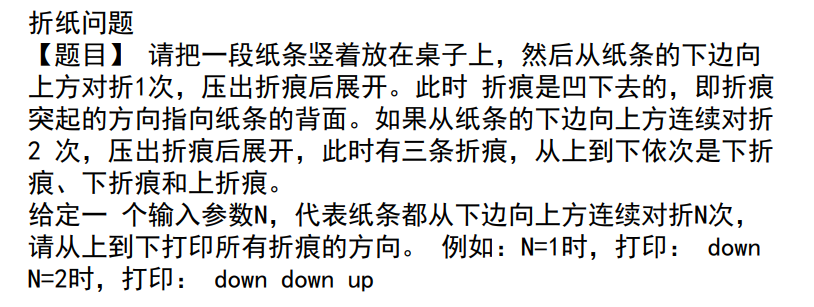二叉树相关知识点及题目。
实现二叉树的先序,中序,后序遍历,包括递归方式和非递归方式
1 | import java.util.Stack; |
如何直观的打印一颗二叉树
1 | public class Code_02_PrintBinaryTree { |
在二叉树中找到一个节点的后继节点

- 找前驱也类似。
1 | public class Code_03_SuccessorNode { |
介绍二叉树的序列化和反序列化
- 先序,中序,后序 序列化
- 层次序列化
1 | import java.util.LinkedList; |
折纸问题

1 | public class Code_05_PaperFolding { |
判断一棵二叉树是否是平衡二叉树
平衡二叉树:对于树中任意一个节点,它的左子树右子树高度差不超过1.
递归套路
平衡性用来解决效率问题
1 | public class Code_06_IsBalancedTree { |
判断一棵树是否是搜索二叉树、判断一棵树是否是完全二叉树
- 搜索二叉树:对于任意一个节点,左子树都比它小,右子树都比它大(通常不出现重复节点)——中序遍历是升序的,就是搜索二叉树,否则就不是
- 完全二叉树判断——二叉树按层遍历:1,如果一个节点有右孩子但没有左孩子,返回false;2,如果一个节点不是左右两个孩子都全(有左没右,或者左右都没有),后面遇到的所有节点都必须是叶节点,否则不是完全二叉树
1 | import java.util.LinkedList; |
已知一棵完全二叉树,求其节点的个数

- 满二叉树:
N = 2^l -1
1 | public class Code_08_CompleteTreeNodeNumber { |
时间复杂度:O((logN)^2) 遍历节点数logN,每个节点求边界,logN